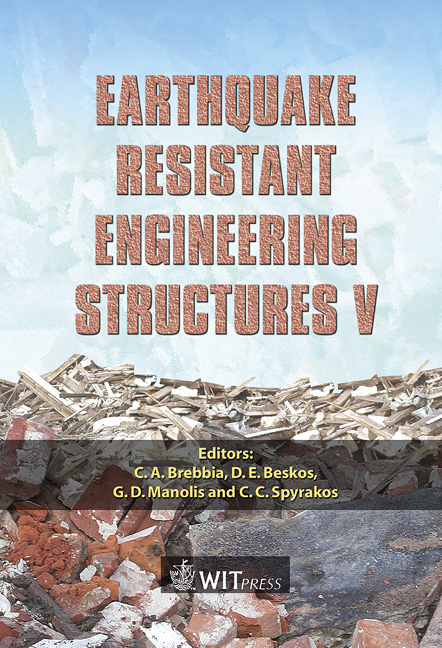Seismic Design Of Steel Frames With Partial Strength Joints
Price
Free (open access)
Transaction
Volume
81
Pages
13
Published
2005
Size
468 kb
Paper DOI
10.2495/ERES050161
Copyright
WIT Press
Author(s)
G. Rizzano
Abstract
In the seismic design of steel frames, beam-to-column joints can be designed either as full strength joints, forcing the location of the plastic hinges at the beam ends, or as partial strength joints which have to dissipate the seismic input energy. Seismic codes provide specific design criteria for full strength joints, but there are no detailed recommendations dealing with partial strength connections. Therefore, in this paper, by means of a simplified model, such as a SDOF system, the requirements which partial strength joints have to possess, for designing steel frames characterised by seismic performances equivalent to those of steel frames with rigid full strength joints, are pointed out. Successively, starting from the above requirements, a new method for designing seismic resistant steel frames with extended end plate connections leading to the complete definition of the geometrical and mechanical parameters of the joints is proposed. Keywords: seismic design, steel frames, partial strength joints. 1 Introduction It is well known that in the seismic design of steel frames the dissipation of the seismic input energy is provided by the plastic engagement of some zones of structural members, the so-called \“dissipative zones” which have to be properly detailed in order to assure wide and stable hysteresis loops. In addition, it also known that, in order to design dissipative structures, it is important to promote the plastic engagement of the greatest number of dissipative zones. Aiming to prevent the premature plastic engagement of the columns which can lead to a non dissipative collapse mechanism, both in the American seismic codes [1, 2] and in Eurocode 8 [3] the member hierarchy criterion is suggested which
Keywords
seismic design, steel frames, partial strength joints.





